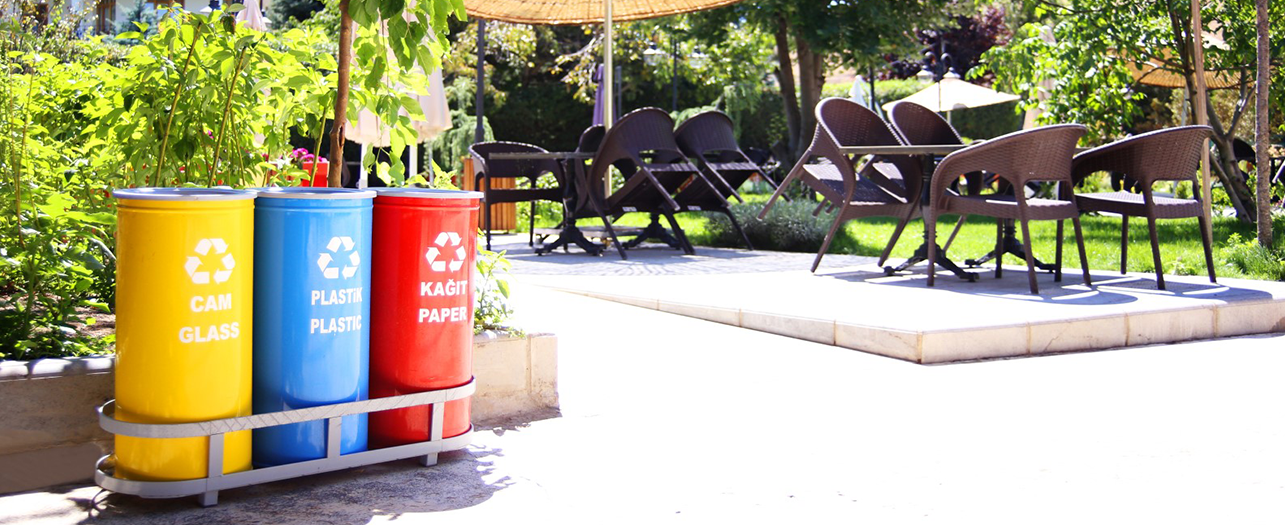A zero-waste future sounds like a utopian dream, especially with the advent of the climate crisis as the world scrambles to get its act together. Achieving a future that is devoid of waste certainly sounds like an impossible challenge to overcome, but we can definitely get close with the right approach. The secret ingredient is waste segregation. It’s an approach that lays the foundational building blocks for a waste-free future, because segregated waste helps us identify what is truly disposable, and what can be reused, recycled or upcycled in a way where it avoids its trip towards the landfill altogether. At POWER Bear, we’re constantly working on innovative waste management solutions that can help humanity achieve zero waste, or at least get as close to it as possible.
The True Meaning of Waste Segregation
Landfills account for nearly 15% of methane emissions, a greenhouse gas with 28 times the warming potential of CO₂. When organic waste mingles with recyclables, it contaminates entire batches, rendering them unfit for reuse. Effective segregation prevents this by channeling materials into dedicated streams: paper to pulping facilities, plastics to recycling plants, and organics to composting centers.
For instance, cleanly sorted aluminum cans can be recycled indefinitely without quality loss, while contaminated batches often end up incinerated. This distinction underscores segregation’s dual role: reducing environmental harm and preserving material value. Businesses that master this process not only meet sustainability targets but also align with circular economy principles, where waste is minimized, and resources are perpetually cycled, enjoying the tangible benefits of waste segregation.
Financial Incentives: Beyond Environmental Stewardship
The effects of proper waste segregation aren’t just palpable from an ecological lens but a financial one too. Consider the economics:
- Recyclables as Revenue: Clean, sorted materials like PET plastic or corrugated cardboard command higher prices in recycling markets. Recycling and waste segregation are also known to improve revenue and cut costs by sizable margins. For instance, Houston based Waste and Recycling firm WM reported an 18.6% increase in revenue due to its waste collection and recycling efforts in 2023. “Our strong results have been led by our collection and disposal business, where our focused efforts on frontline retention, optimization of our cost structure and providing differentiated service to our customers have fueled earnings growth”, WM CEO Jim Fish says.
- Reduced Disposal Costs: Landfill fees, often calculated by weight, diminish as segregated organics and recyclables are diverted.
- Regulatory Compliance: Governments worldwide are enforcing stricter waste laws. The EU’s Circular Economy Action Plan, for example, mandates 65% municipal waste recycling by 2035. Non-compliance risks fines up to €200,000 for repeat offenders.
These financial drivers make segregation a non-negotiable component of modern business strategy.

POWER Bear’s Solutions: Precision Engineering for Real-World Impact
Effective segregation hinges on infrastructure that simplifies user participation and withstands operational demands. POWER Bear’s product line addresses these needs through intelligent design and durability.
Multi-Stream Recycle Bins - The Penultimate Waste Segregation Bins
POWER Bear offers a wide range of multi-stream recycle bins as part of its range of designer bins. These recycle bins are inherently designed for waste segregation, making them the perfect waste segregation bins in corporate spaces, factories and industrial regions alike. In addition to standard waste segregation features, these bins can be customized with personal branding, labelling and colors for improved effectiveness depending on the areas they’re installed in.
Modular Recycling Bins - For Added Flexibility
For businesses that need improved functionality and deal with various kinds of recyclable materials, they can explore POWER Bear’s range of modular recycling bins, which offer the flexibility and practicality of additional compartments and improved customizability.
Best Practices for Implementing Segregation Systems
To maximize ROI, businesses must pair infrastructure with strategy:
- Education Campaigns: Use workshops and digital tools to train employees and customers.
- Strategic Bin Placement: Position bins in high-visibility zones like entrances, cafeterias, or production floors.
- Data Analytics: Track waste metrics to refine collection schedules and identify contamination hotspots.
Conclusion: From Vision to Action
The zero-waste future is not a distant ideal, it’s a measurable outcome of today’s decisions. By adopting POWER Bear’s range of designer recycle bins, businesses can transform waste segregation from a compliance task into a strategic advantage. These solutions reduce costs, mitigate regulatory risks, and position organizations as sustainability leaders.
The importance of waste segregation cannot be understated enough. The journey towards a zero-waste future begins with a simple truth: Waste is a design flaw. With the right tools, that flaw becomes an opportunity.
Partner with POWER Bear
Ready to redefine your waste strategy? Discover how POWER Bear’s segregation solutions can drive efficiency, compliance, and sustainability for your business. Contact our team today for a tailored consultation.


